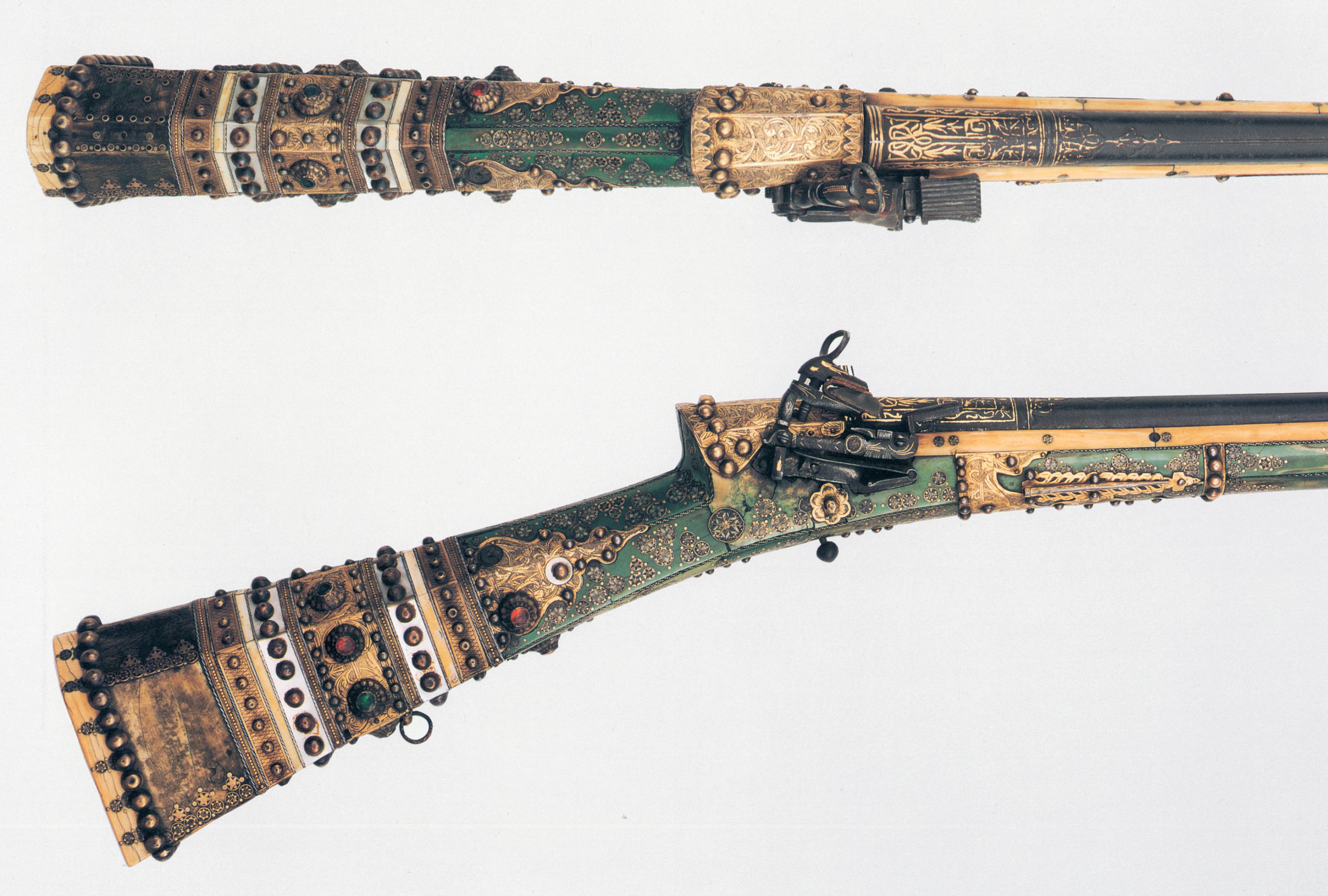 Print Page
Print Page
 Print Page
Print Page
Location: Ottoman Turkey
Materials: wood, ivory or bone, steel, brass, copper, gold, mother-of-pearl and coloured glass
Dimensions: 154.5cm (length)
Accession Number: MTW 1166
Other Notes:
The veneering and inlay of musket-stocks with fine woods, ivory and gold, silver or brass wire was part of a woodworking tradition that developed early in the Ottoman empire; the Qur’an chest made in 911 AH (1505–6 AD) for the mosque of Bayezid II in Istanbul, which was inaugurated in 1505, bears the signature of such an inlayer, Ahmed ibn Hasan. In his account of Bitlis in 1655–6, Evliya Çelebi gives a list of muskets by the most reputed makers allegedly in the collection of Abdal Khan, the ruler of that principality. The stocks were of fine woods – walnut, maple, hornbeam – though evidently undecorated, and were often sold separately.
The 1640 Istanbul fixed price register (narh defter) shows conclusively that even the most costly firearms were available on the market in Istanbul. It demonstrates that even if the craftsmen who offered them for sale primarily supplied the palace, they were prepared to manufacture firearms to individual order or for suppliers’ stock, in short, for anyone sufficiently affluent to buy them. An entry under the listing of Tüfengciyan (‘musket-makers’) translates roughly as ‘musket with a barrel of watered steel and with silver joints, nielloed gold openings, and the stock bound with silver wire, inlaid with silver and encrusted with coral, 4800 akçe’. Such pieces were evidently parts of sets with matching pistols [see MTW 1162].
The pattern-welded barrel, which is spiralled at the tip, is damascened in gold, including a roundel with the name of the maker, Ahmed Eyyubi. The bore is toothed. Most of the ivory used for the elaborate inlay of the stock has been stained green. The coloured-glass incrustations are of lesser quality and suggest that the gun was renovated at a later period.
Bibliography:
D. Alexander, The Arts of War. Arms and Armour of the 7th to 19th Centuries, The Nasser D. Khalili Collection of Islamic Art, volume XXI, London 1992, cat.72, pp.126–7.

